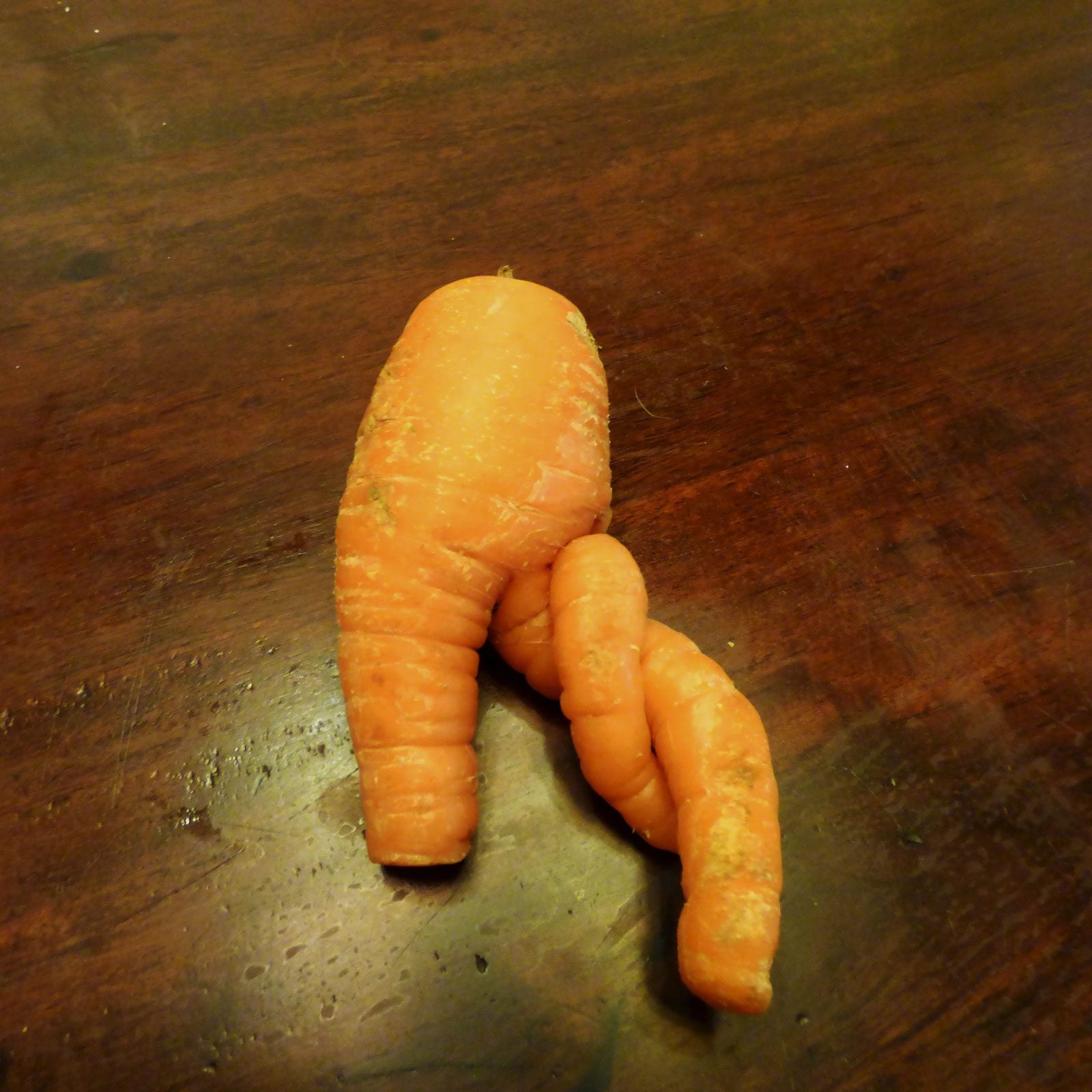Deformed Carrots: Reasons For Distorted Carrots And How To Fix A Carrot Deformity


Carrots are a root vegetable with a characteristic, long-pointed, edible root. Deformed carrots can be caused by a variety of problems and may be forked, bumpy, or otherwise misshapen. These carrots are usually edible, although the core may become woody and slightly bitter. In fact, many of the baby carrots you purchase as snacks are just whittled down deformed carrots. When you find carrots forked and deformed, it may be cultural, insect, or even disease related. Learn what causes these deformities in carrots and what easy controls to apply for healthy, sweet vegetables.
Carrot Problems
Deformed carrots are unsightly and smaller than they might be if they didn't have any problems. While most carrot problems are usually related to boring and chewing insects, the most common reason you may find carrots forked and deformed is improper cultivation. Carrots are easy to grow and thrive in many zones during the growing season. The plants need well worked soil with good organic amendments and plenty of water. Carrots that force their way through compacted or rocky soil will split and become malformed. Carrots may also become stunted or deformed when they are planted too closely together. Make sure to consult the seed packet before planting and provide adequate space for the vegetable's development.
What Causes Deformities in Carrots?
The appearance of stunted and split carrots typically has the gardener wondering what causes deformities in carrots. Deformed carrots are not only caused by poor soil, but may also be from the activities of root knot nematodes or a disease called Phytoplasma aster. Nematodes are nearly invisible soil organisms with feeding activity that can cause nodules to form on plant roots. Since the carrot is the main root of the plant, these nodules distort and deform the vegetable. Phytoplasma aster is a disease introduced by leaf hoppers and among the list of common carrot problems. The disease can survive the winter in weeds and then transfer to other plant hosts. When carrot roots develop excess furry roots on the main root and the foliage turns yellow, pull the plants. This disease will spread. It's best to avoid planting in that area for at least a season unless you solarize and sterilize the soil. Control leaf hoppers and nematodes with natural bacterial agents, such as Bacillus thuringiensis (Bt).
How to Fix a Carrot Deformity
You really can't fix a carrot deformity once it has grown that way. The best offense is defense, which means you need to prevent carrot problems before they occur. Till soils well and add plenty of compost prior to planting to promote vigorous growth and straight vegetables. Remove old plant debris every fall and keep weeds pulled to limit Phytoplasma problems. Deformed carrots are still tasty and can be used successfully in soups and stews where their appearance doesn't count.
Sign up for the Gardening Know How newsletter today and receive a free copy of our e-book "How to Grow Delicious Tomatoes".

Bonnie Grant is a professional landscaper with a Certification in Urban Gardening. She has been gardening and writing for 15 years. A former professional chef, she has a passion for edible landscaping.